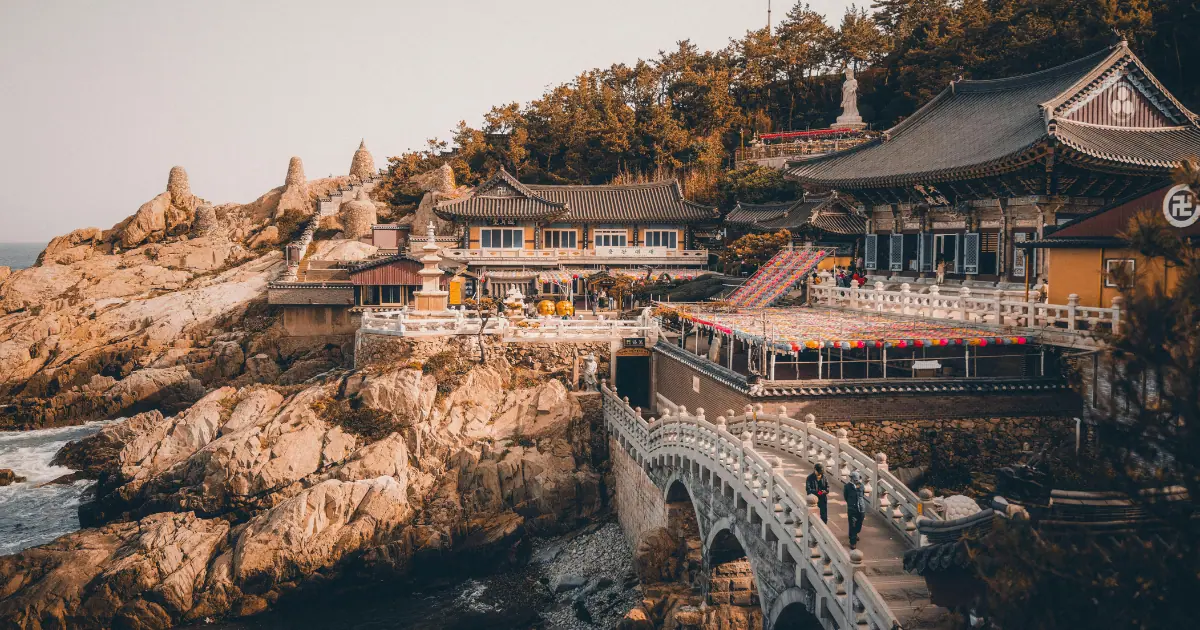Are you seeking things to do in Busan on your next trip to South Korea? Busan combines coastal beauty, vibrant markets, and serene temples. You can relax on sandy shores, feast on the freshest seafood, and hike scenic trails all in one day. This city brims with cultural landmarks and modern touches. From the bustling Jagalchi Fish Market to peaceful Haedong Yonggungsa Temple, Busan welcomes every kind of traveler. Below, discover ten must-see attractions that capture Busan’s essence in 2025.
Explore the Stunning Beaches of Busan
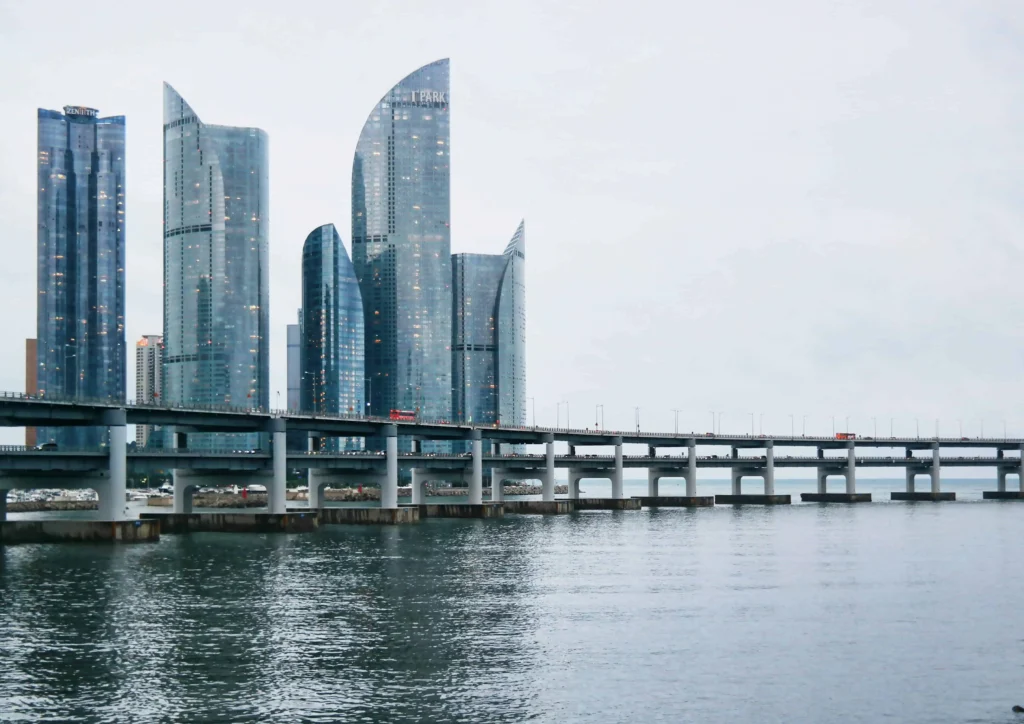
Haeundae Beach: The Crown Jewel of Busan’s Coastline
Haeundae Beach is South Korea’s most famous beach. Its long stretch of sand sees sunbathers, volleyball games, and lively festivals. In summer, locals and tourists flock here, renting beach umbrellas for about 10,000 KRW ($8) a day. Stroll the boardwalk in the early morning to see fishermen casting lines, or come at dusk for neon-lit bars.
- What to Expect
- Weekends are crowded, so arrive early if you want a prime spot
- Summer water sports (jet skis, banana boats) start around 15,000–30,000 KRW ($12–$25)
- Nearby
- The Sea Life Busan Aquarium (entry ~29,000 KRW / $23) sits right off the beach, ideal for a short break from the sun
Gwangalli Beach: A View of the Iconic Gwangan Bridge
Gwangalli Beach boasts a sweeping view of Gwangan Bridge, glowing with LED lights at night. Cafés and restaurants line the main street behind the sand, offering coffee (3,000–5,000 KRW) or dinner with a sea breeze. After dark, the area transforms into a romantic setting. Live music from buskers echoes along the coast.
- Why It’s Special
- Great vantage point of the illuminated bridge
- Abundant pubs with local craft beer (4,000–7,000 KRW)
- Pro Tip
- Check if any fireworks festival is scheduled, typically in autumn. Thousands gather for the show
Songdo Beach and Skywalk: A Unique Oceanic Experience
Songdo Beach ranks among lesser-known things to do in Busan. Its highlight is the Songdo Skywalk—a curving platform above the water that extends nearly 100 meters. You’ll see fish swimming below through glass panels. The shoreline itself is quieter than Haeundae. Families appreciate a small cable car ride (Songdo Marine Cable Car from 15,000 KRW / $12 round trip) connecting the beach to nearby cliffs.
- Features
- A scenic walkway over the ocean, great for photos
- Cable car giving bird’s-eye views of emerald waters and rocky coasts
- Cost
- The skywalk is free. The cable car requires a ticket
- When to Visit
- Mornings offer soft sunlight and fewer crowds. Evenings show a calm sea under sunset hues
If you’re planning a broader East Asia adventure, make sure to explore a perfect 14-day itinerary for Japan.
Visit the Historic and Scenic Temples
Beomeosa Temple: A Tranquil Mountain Retreat
Beomeosa Temple rests on Geumjeongsan Mountain’s slopes, providing peaceful forest vibes. Dating back over 1,300 years, it’s a must for anyone seeking spiritual things to do in Busan. Colorful lanterns, old wooden halls, and gentle chanting greet visitors. Admission is free, but you can join a temple stay program (roughly 50,000–80,000 KRW / $40–$65 per night) for an immersive experience.
- Highlights
- Daeungjeon Hall, recognized for ornate carvings and a quiet courtyard
- Small streams flowing near the entrance, perfect for midday rest
- Tip
- The uphill walk takes around 10–15 minutes from the nearest bus stop. Wear comfy shoes
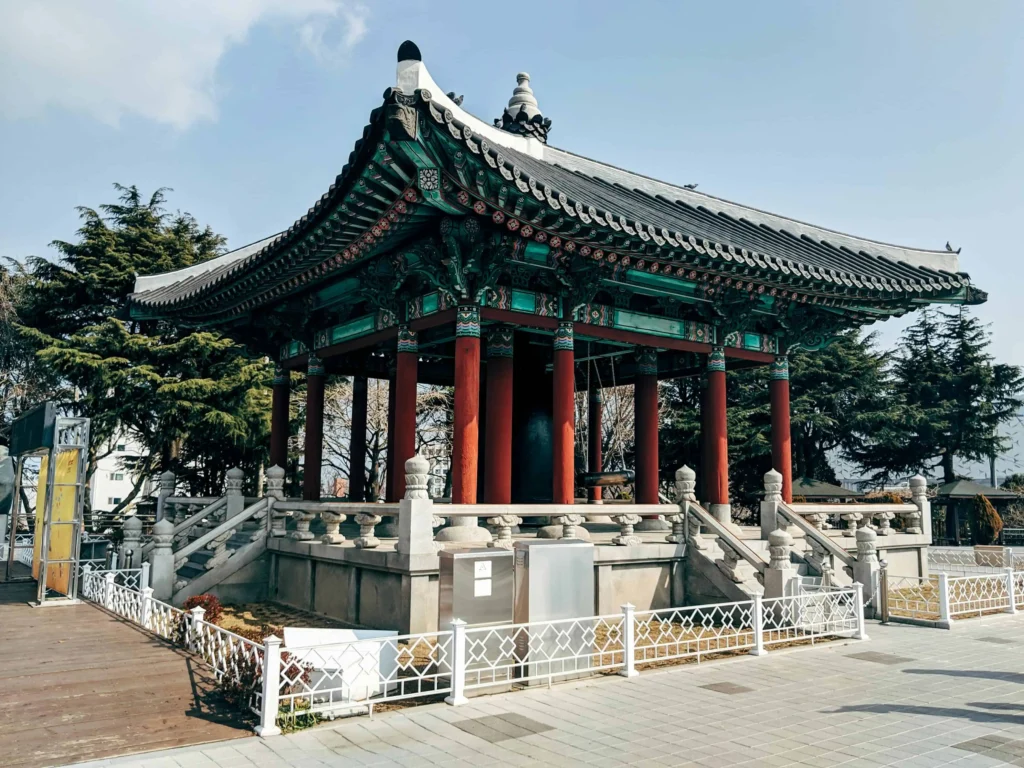
Haedong Yonggungsa Temple: A Temple by the Sea
Haedong Yonggungsa stands along a rugged coastline, a rare watery backdrop for a Korean temple. Stone statues dot the path leading down, culminating in the temple perched beside crashing waves. Sunrise watchers come early to witness first light over the East Sea. Entrance is free, but small donations for temple upkeep are appreciated.
- Why Visit
- Dramatic ocean views from temple balconies
- Seasonal festivals, including Buddha’s Birthday in spring when lanterns illuminate the complex
- Location
- Around a 40-minute bus ride from Haeundae area. Taxis cost about 15,000–20,000 KRW ($12–$16)
Samgwangsa Temple: Famous for Its Lantern Festival
Samgwangsa Temple’s annual Lantern Festival in May transforms the hillside into a kaleidoscope of color. Tens of thousands of lanterns fill the courtyards and stairways, each symbolizing hope or devotion. Even off-season, the temple’s architecture and hillside vantage point offer city views. No admission fees, though voluntary contributions help temple projects.
- During the Festival
- Lights turn on near dusk, with cultural performances (dance, music)
- Crowded, so consider using public transit to reduce traffic headaches
- Photography
- Sunrise or night-time captures luminous lanterns against a dark sky
For a fascinating comparison, discover fun and fascinating facts about Japan alongside Busan’s rich culture.
Discover Busan’s Cultural Gems
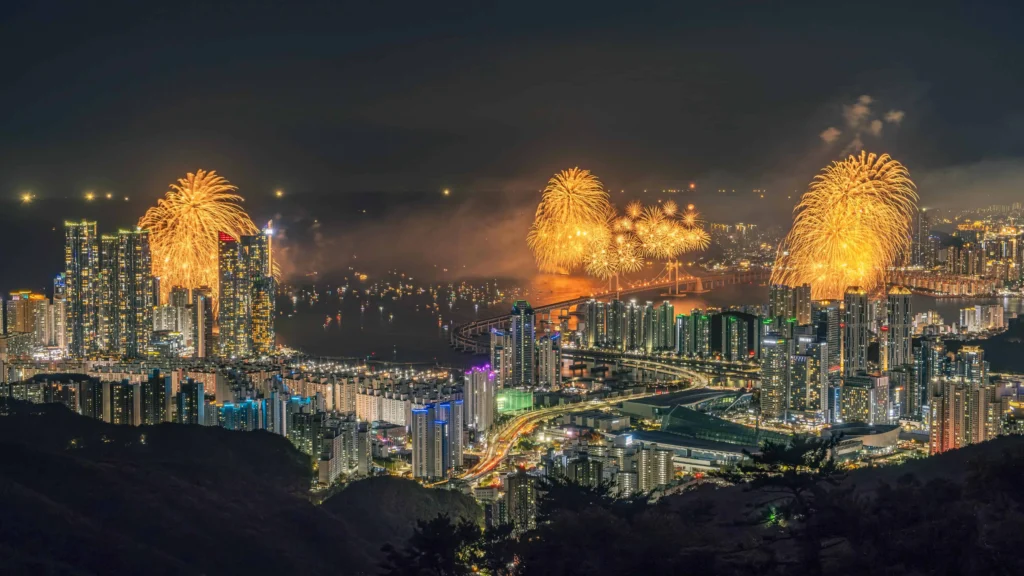
Gamcheon Culture Village: Busan’s Artistic Haven
Gamcheon Culture Village, once a modest hillside community, is now an artsy maze of pastel houses, murals, and quirky sculptures. You can buy a map at the entrance for about 2,000 KRW ($1.50), guiding you through winding alleys. Cafés sell sweet treats around 5,000–6,000 KRW ($4–$5). Keep a camera ready: each turn reveals another bright vantage point.
- What to Do
- Hunt for whimsical statues or vantage decks with harbor views
- Enjoy local crafts from small shops, such as handmade postcards or upcycled trinkets
- Etiquette
- Locals still live here, so maintain quiet in residential zones
Jagalchi Fish Market: The Heart of Busan’s Seafood Scene
Jagalchi Fish Market is a seafood lover’s dream among things to do in Busan. Tanks brim with flapping fish, shellfish, and octopuses. Vendors call out daily deals, while visitors can pick fresh fish to have it sliced for sashimi or grilled on-site. Prices vary, but a fresh fish meal might cost 20,000–30,000 KRW ($16–$24) per person.
- Two Sections
- Outside stalls along the pier for cheaper deals
- Indoor hall with seating areas and busy crowds
- Adventure
- Try live octopus (sannakji) if you dare. Chew thoroughly, as it still wriggles a bit
BIFF Square: Experience Busan’s Film Festival Hub
BIFF Square stands for Busan International Film Festival. Its open plaza teems with street food stalls and cinema-themed attractions. Celebrities often leave handprints here. Throughout the year, visitors can watch short films at local theaters or attend special events if they coincide with the annual film festival in October.
- Street Food
- Ssiat Hotteok (seed-stuffed pancake) about 1,500 KRW ($1.20). Crisp outside, sweet inside
- Fish cake skewers (odeng) for 1,000–1,500 KRW ($0.80–$1.20) each
- Shopping
- Surrounding shops sell cosmetics, souvenirs, or trendy clothes. Bargain if possible
While exploring Asia, you might also want to try top activities to do in Japan for a complete experience.
Embrace Nature and Scenic Adventures
Taejongdae Resort Park: Cliffside Views and Natural Beauty
Taejongdae welcomes you with rugged cliffs dropping into blue seas. A small train, the Danubi Train (3,000 KRW / $2.40), circles the park, stopping at vantage points like Yeongdo Lighthouse. Paths lead you through thick greenery, culminating in breathtaking ocean views. On clear days, you may see Tsushima Island across the strait.
- What to Do
- Visit the Lighthouse Observatory for panoramic images
- Try a local snack from small vendors near the entrance (kimbap ~3,000 KRW)
- Time
- 2–3 hours if you wish to ride the train and do short hikes
Oryukdo Skywalk: Thrill-Seekers’ Glass-Bottom Experience
Oryukdo Skywalk sits on the edge of a coastal cliff, featuring a glass walkway that extends over the sea. Step onto transparent panels to watch waves crash beneath your feet. Admission is free, but lines can form on weekends. Photographers love capturing adrenaline-filled poses on the platform, with Busan’s rocky coastline in the background.
- Location
- Near the southern outskirts of Busan, accessible by bus or taxi
- Height
- Only a few meters above water, but the swirling sea below feels dramatic
- Caution
- No high heels. The walkway can get slippery
Igidae Park: Coastal Trails with Stunning Vistas
Igidae Park’s rugged trails wind along Busan’s southern edge, unveiling hidden coves and rocky shores. The main footpath offers vantage points of the city skyline, including Gwangandaegyo Bridge shimmering by dusk. Hikes can last 1–2 hours, moderate in difficulty. Bring water and good shoes, as some sections are steep.
- What to See
- Sea caves, vantage decks, and sometimes fishermen perched on rocky edges
- Cost
- Free. Minimal signs, so a phone map helps orientation
- Tip
- Start near Igidae Coastal Walk entrance. End near Dongsaengmal, then bus or taxi back
If you’re looking for something different, plan a glamorous getaway in Beverly Hills after your Busan trip.
Shop, Dine, and Enjoy Busan’s Nightlife
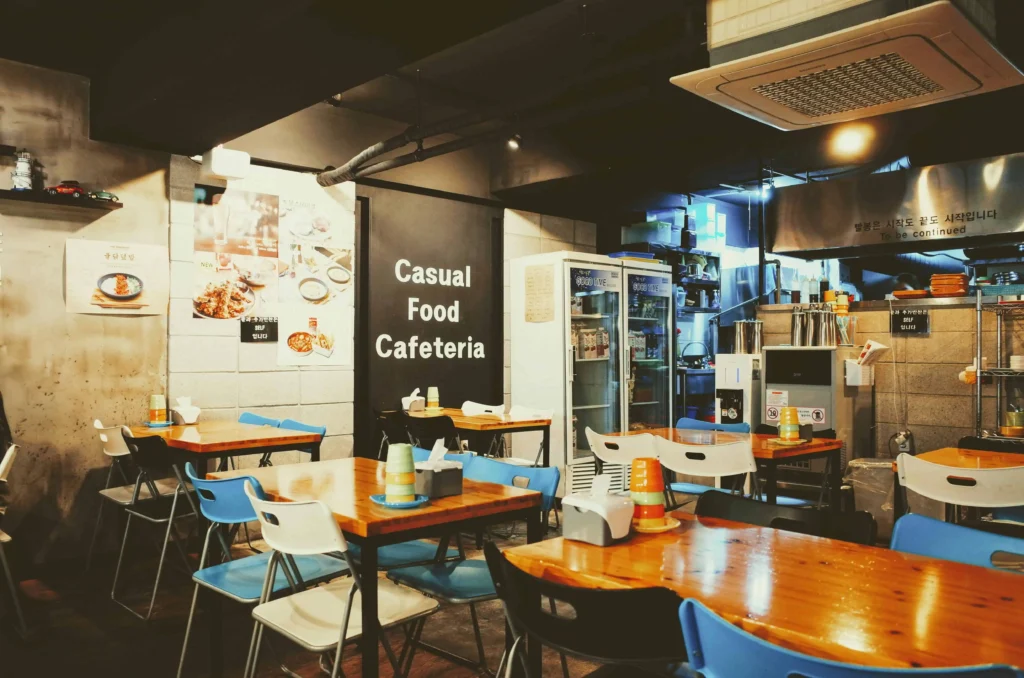
Gukje Market: Bustling Streets for Shopping Enthusiasts
Gukje Market brims with stalls selling clothing, electronics, household goods, and souvenirs. Prices vary, but expect bargains if you’re savvy. Food alleyways let you munch tteokbokki (spicy rice cakes) for 2,500 KRW ($2) or bibimbap for 5,000–6,000 KRW ($4–$5). The market’s labyrinthine layout offers an authentic local vibe.
- Where to Explore
- Shoe alley, clothing sections, second-hand corners for vintage finds
- Haggle
- Some shopkeepers allow small discounts, especially if you buy multiple items
- Adjacent
- Bupyeong Kkangtong Market (nearby) for more street food in the evening
When traveling internationally, is travel protection worth it? can be a critical question to consider.
Seomyeon District: Busan’s Vibrant Entertainment Hub
Seomyeon stands at Busan’s center, brimming with eateries, pubs, karaoke, and shops. The underground shopping arcade yields Korean cosmetics or trendy outfits ( $10–$50). Above ground, neon signs beckon you into local bars. Weekends see crowds of college students and office workers unwinding with soju (2,000–3,000 KRW / $1.60–$2.40) or craft beer (5,000–8,000 KRW / $4–$6).
- Nightlife
- Karaoke rooms (noraebang) from 15,000–25,000 KRW ($12–$20) per hour for private booths
- Street food tents offering fish cake, cheese sticks, or spicy beef soup
- Late Night
- Some bars and clubs remain open past 2 AM. Taxis to your hotel might cost 8,000–12,000 KRW ($6–$10) depending on distance
Busan Tower at Yongdusan Park: City Views After Dark
Busan Tower rises 120 meters above Yongdusan Park, showcasing a sweeping city panorama. Entry costs around 8,000 KRW ($6.50). After sunset, the city glitters with neon. Glass windows let you identify landmarks, from Gwangan Bridge to the busy port.
- Park Scenes
- A small temple near the base, plus a statue of Admiral Yi Sun-sin
- Best Time
- Evening for city lights. However, mid-afternoon sees fewer queues
- Nearby
- Nampo area with BIFF Square and Gukje Market. You can combine them in one day
Don’t forget the basics—these essential packing tips for international travel will help you stay prepared for Busan.
Table: Top Busan Attractions at a Glance
| Attraction | Type | Highlights | Best Time to Visit |
|---|---|---|---|
| Haeundae Beach | Beach | Pristine sands, vibrant nightlife | Summer (June to August) |
| Beomeosa Temple | Cultural/Religious | Historic architecture, serene ambiance | Spring or Fall |
| Gamcheon Culture Village | Cultural/Artistic | Colorful streets, art galleries | All year round |
| Taejongdae Resort Park | Nature | Cliffside views, lighthouse | Spring or Fall |
| Jagalchi Fish Market | Market/Local Culture | Fresh seafood, local experience | Morning hours |
FAQ Section
Is Busan worth visiting for tourists?
Yes. Busan merges scenic beaches, cultural temples, fresh seafood, and lively neighborhoods. It’s a refreshing contrast to Seoul’s urban rush.
How many days in Busan is enough?
Three to four days let you tour major beaches, temples, and markets. However, five or six days allow side trips, plus slower exploration of hidden gems.
What is famous about Busan?
Busan is famous for its coastal vibe, vibrant fish markets like Jagalchi, and events like the Busan International Film Festival. It also boasts iconic beaches like Haeundae and a dynamic nightlife in Seomyeon.
How long is it from Seoul to Busan?
A KTX bullet train ride from Seoul to Busan takes around 2.5 hours, costing 50,000–60,000 KRW ($40–$48) one-way. Buses are cheaper but slower, about 4–5 hours.
Conclusion
Busan resonates with energy. Its sandy beaches welcome sunseekers, while cliffside temples inspire spiritual reflection. Night markets, fish stalls, and glamorous cityscapes bring an ever-changing feast for the senses. Whether you sip coffee on a coastal promenade, marvel at Gamcheon’s rainbow alleys, or savor fresh sashimi at Jagalchi, Busan immerses you in South Korean culture in a unique, laid-back way.
Let these things to do in Busan spark your 2025 itinerary. Stroll Haeundae Beach under the summer sun, visit Haedong Yonggungsa for sunrise, and dine on sizzling seafood by the water. Toss in a scenic hike at Igidae, shop local markets, then toast the evening from a rooftop bar in Seomyeon. Busan invites you to experience the best of contemporary city life balanced with centuries-old traditions. Pack light, bring curiosity, and get ready to fall in love with South Korea’s coastal gem.
For official updates on festivals, schedules, and seasonal events, you can visit the official Busan Tourism website directly. They offer real-time info on local celebrations, transport options, and helpful tips to maximize your Busan adventure.

